Sweet Coneflower (Rudbeckia subtomentosa) of the Aster family (Asteraceae) grows to 3-5 feet tall and has entire to lobed leaves. The genus name honors “Olof Rudbeck the Younger”, a Swedish botanist*. The specific epithet is Latin for “somewhat hairy” to denote its leaf pubescence. Sweet Coneflower occurs in a broad area extending from western Louisiana to southern Wisconsin and from eastern Kansas to western Indiana. In Arkansas, it occurs primarily in the Ouachita Mountains, Arkansas Valley and Ozark Plateaus along with several counties at the southeast corner of the state. It grows in prairies, open woodlands, stream banks, and roadsides in dry to moist sites with various soils. Sweet Coneflower prefers mostly to partially sunny areas. Other common names are Fragrant Coneflower and Sweet Black-Eyed Susan because the crushed flowerheads having an anise scent.
This erect herbaceous perennial develops multiple stems from a compact rootstock producing stubby, rhizomatous roots encircled by growth rings. Single composite flowerheads, on long peduncles, terminate stems and short branches along with additional peduncles growing directly from uppermost leaf axils. A stem and its branches may bear 12+ flowerheads. Width of the terete stems, to about ¼ inch at their bases, gradually reduce to 1/16 inch at flowerheads. Stems have slight, closely spaced ribs extending from their bases to the flowerheads. The straight stems, branches, and peduncles are erect to spreading. Very short, spreading to ascending, hirsute pubescence extends from stem base to the flowerheads – decreasing distally with age.
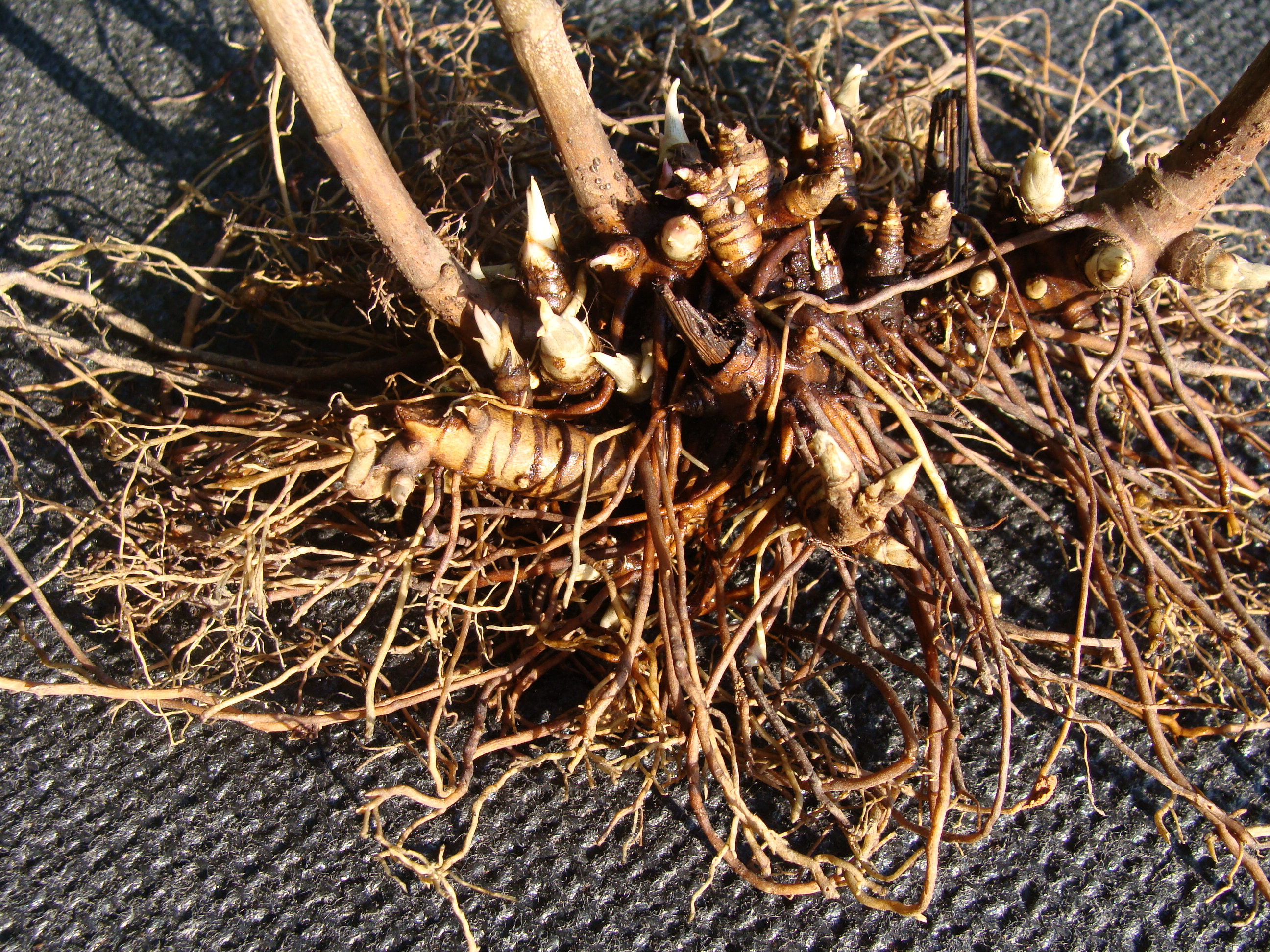
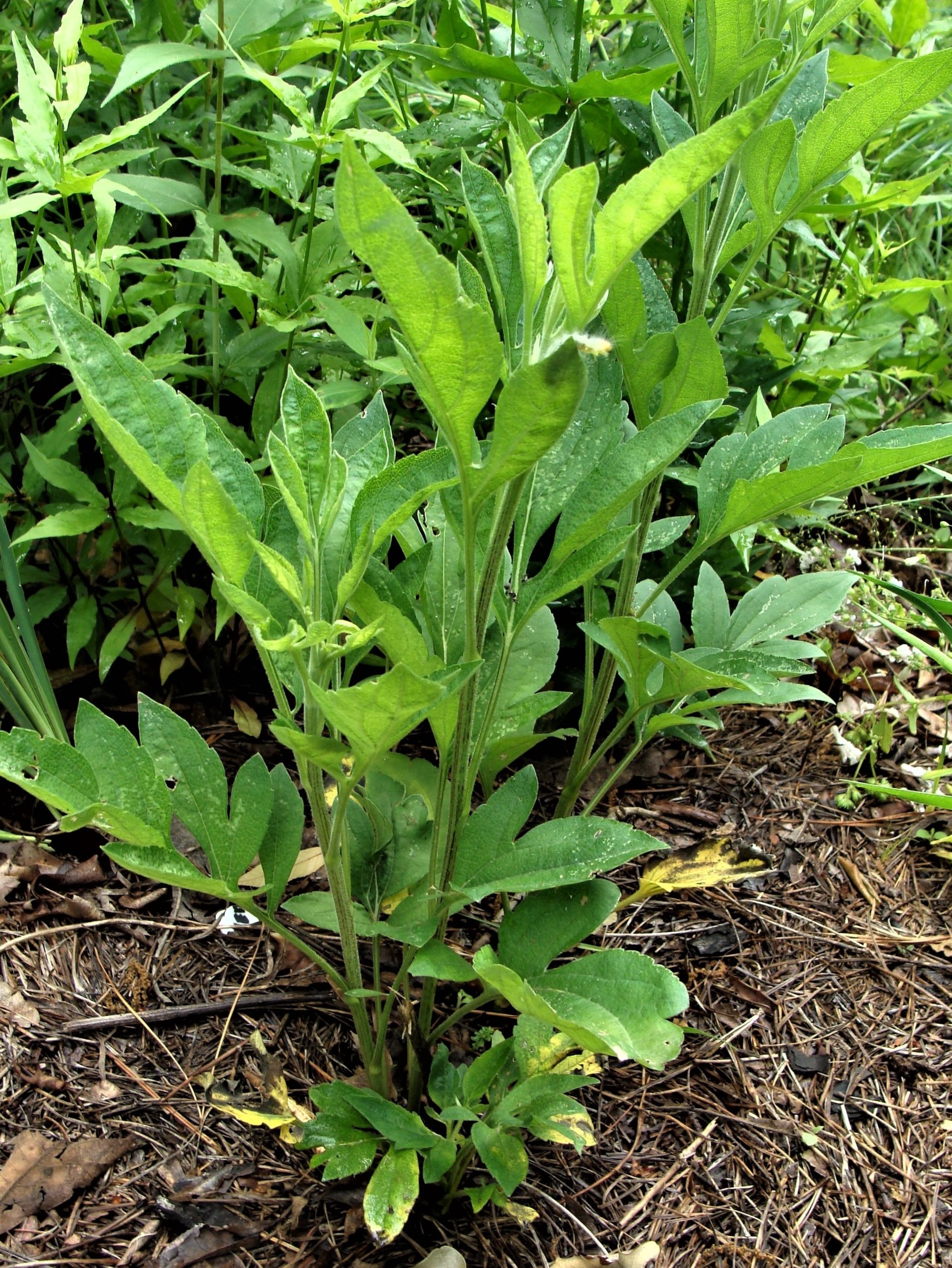
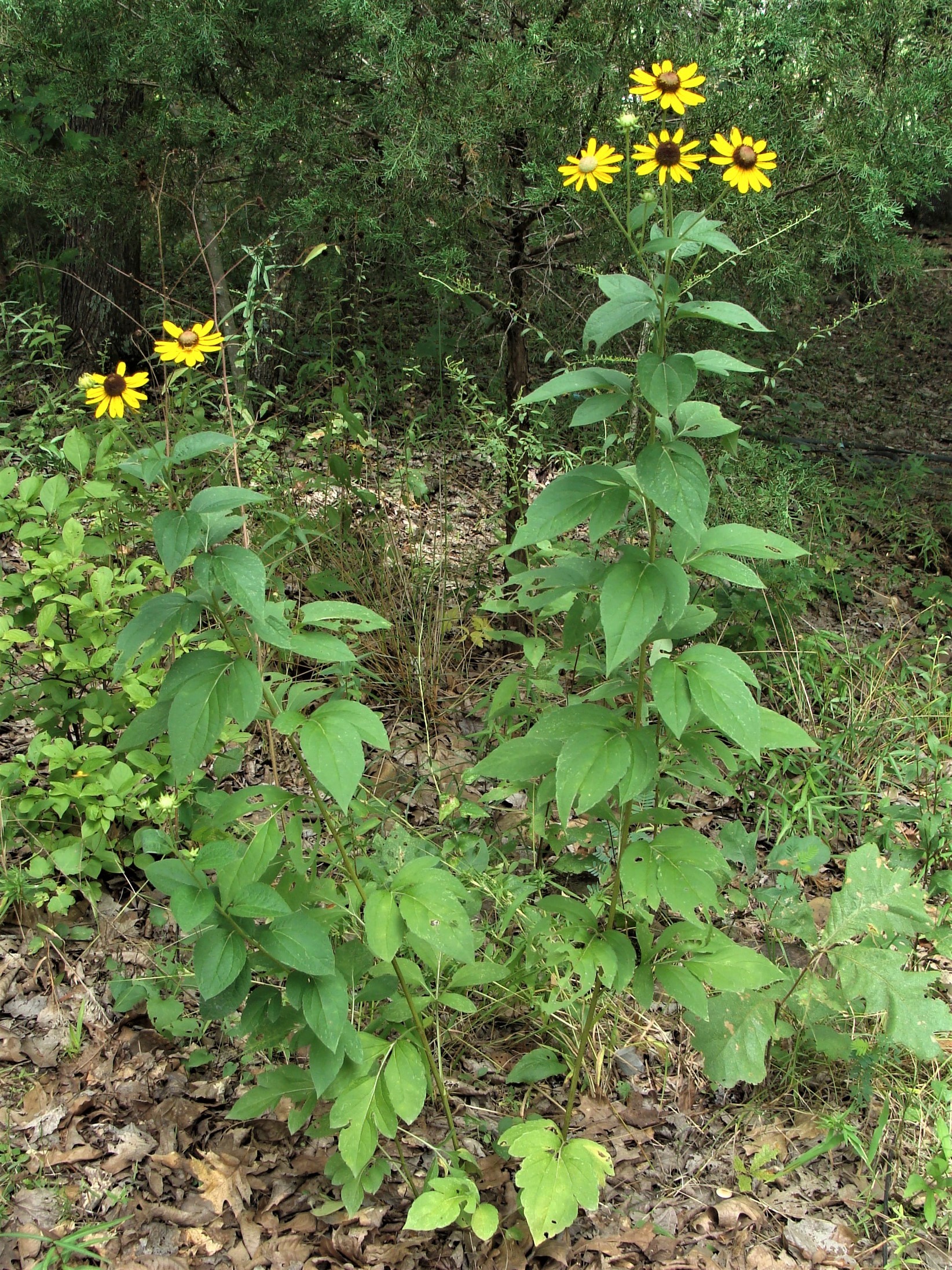
Petiolate leaves, with compound and simple shapes, have a medium green adaxial surface and pale green abaxial surface with whitish principal veins. Well-spaced secondary veins are recessed above and strongly expressed below. Adaxially, the blade surface between minor veins is puckered. Adaxial leaf surface and leaf margins have minute, hirsute pubescence while abaxial surface has dense slightly longer hirsute to short-pilose pubescence, especially on principal veins. Expanded bases of petioles are clasping – more so on lower leaves.

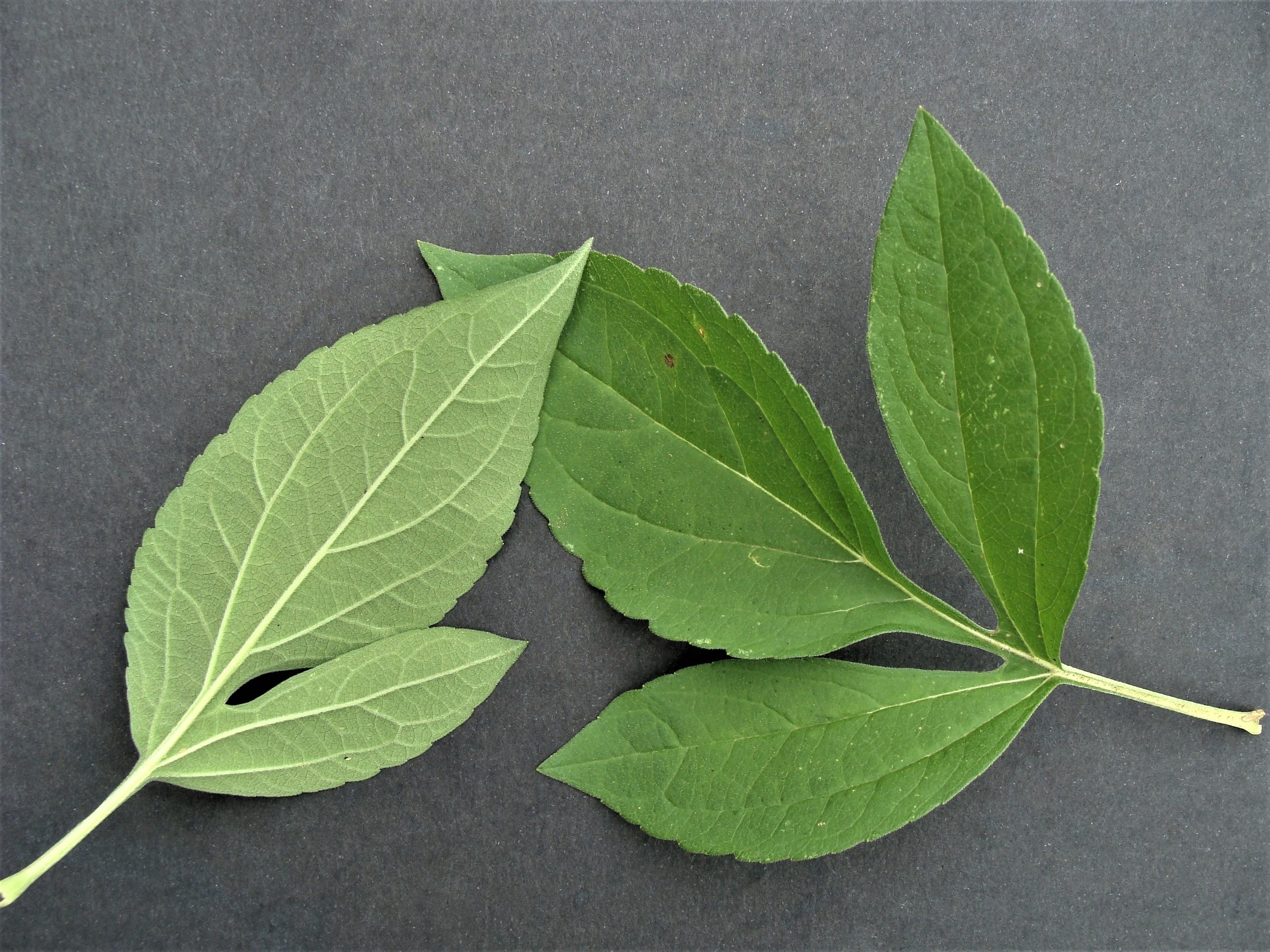

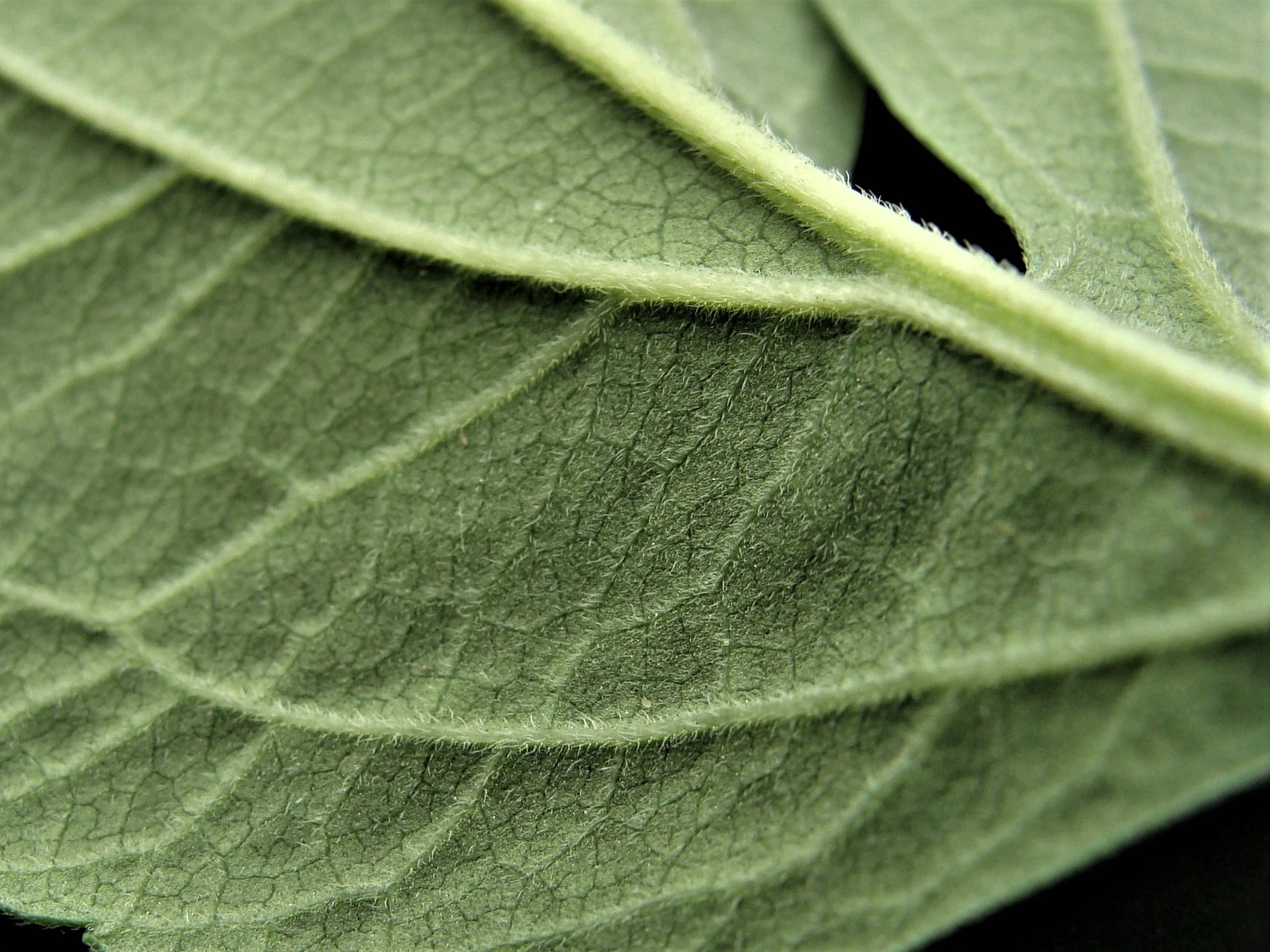
Ascending lower leaves are variously lobed with three primary lobes – a lateral pair of deeply cut lobes and a larger deeply cut terminal lobe. Leaf size is to 9 inches long (including a 3-inch petiole) and to 4½ inches wide. Secondary lobes, ascending in plane of a leaf, are elliptic to broadly elliptic with a tapering base and acuminate tips. Tertiary lobes, spreading in the plane of a leaf, tend to be finger-like. Primary lobes may be cut close to leaf rachis so that the rachis becomes winged – wing width tapers proximally. Leaf margins vary from entire (mostly on rachis side of lobes) to shallowly toothed to shallowly crenulated. Secondary venation varies from arcuate for broad lobes to parallel-arcuate for finger-like lobes. Secondary veins trend toward tips of leaves and lobes. Lowermost leaves drop-off with development of the upper stalk, especially with drying soil.
Ascending upper leaves are unlobed with elliptic to ovate shapes and with rounded bases and acuminate tips. A few leaves between lower-lobed and upper-unlobed leaves may have a single lateral lobe. For the unlobed leaves, leaves are to 3½ inches long (including a ¼-inch petiole) and 1½ inches wide while uppermost leaves are about 2¼ inches long (including a 1¼ inch petiole) and 1⅛ inches wide. Uppermost leaves of a flowering stem subtend either a branch (with leaves and 1+ flowerheads) or a peduncle. Peduncles, to 8 inches long, may bear 1+ leafy, sessile, lanceolate bracts as small as ⅜ inch long and 1/16 inch wide. All lobed and unlobed leaves are alternate and have the same color, margination and vein pattern.

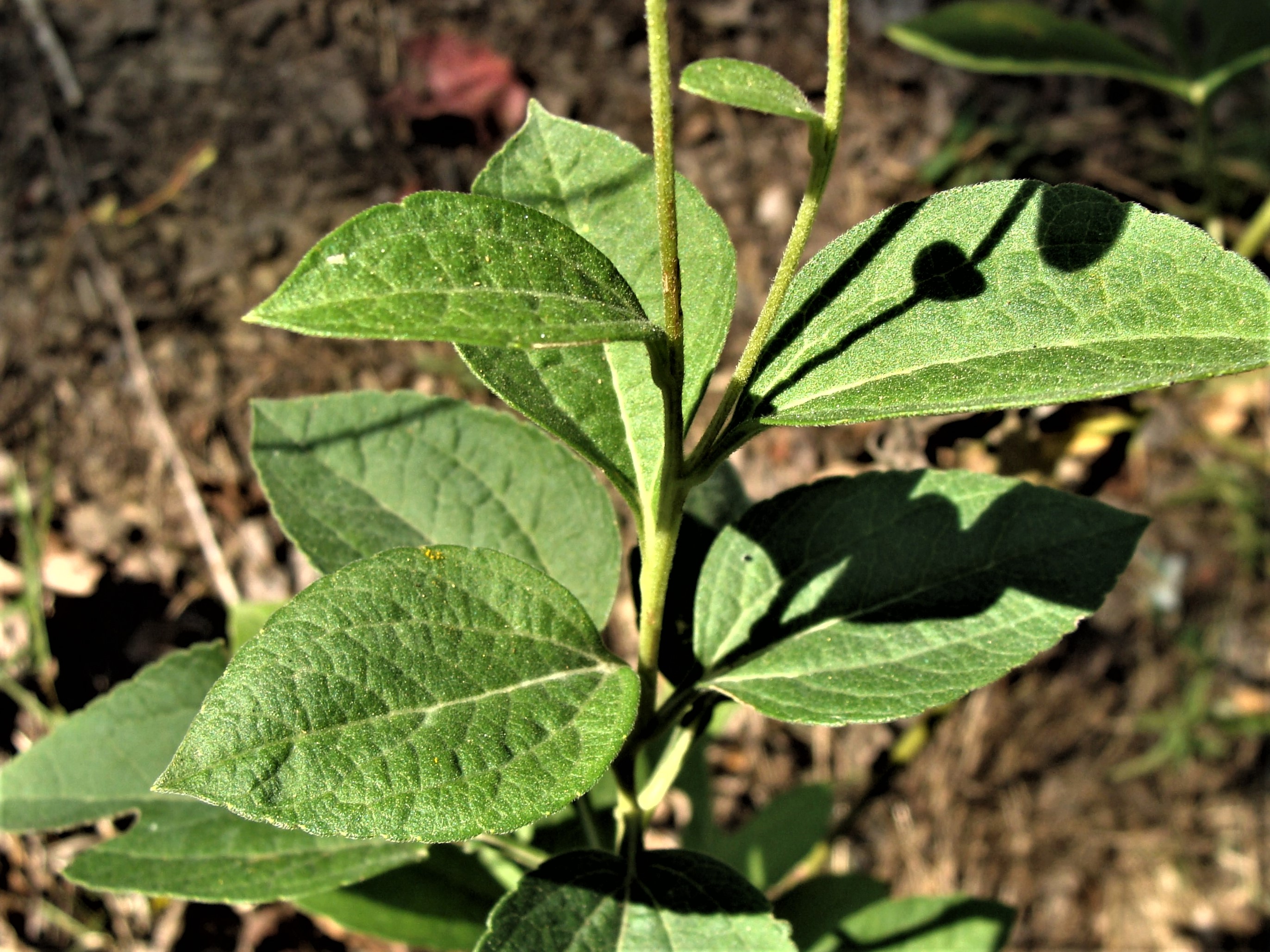


The inflorescence develops in mid-July with flowerheads in bloom from late July into late September. Flowerheads, to 3 inches wide, have a purplish brown central disk composed of numerous tightly packed, fertile, tubular florets surrounded by 16± sterile yellow ray florets. When in bud, the rounded tops of disk florets are closed by 5 stubby, triangular lobes. Florets reach anthesis successionally from the outer edge of the central disk to the center in circular fashion as lobes spread wide. Florets, about ⅛-inch long and 1/16 inch wide, have 5 stamens (filament + anther) and a pistil (fertile ovary + style +stigma). Florets have purplish brown upper portion and pale green hidden portion. Stamens and style/stigma are purplish brown. Stamens, adnate at base of corolla tube, have connate anthers which form an elongate ring which rises above the corolla. Yellow pollen is released inside the anther ring. As the style/stigma pushes through the anther ring, pollen is pushed outside and anthers shrink as the stigma bifurcates to expose an opposite pair of elongate stigmatic surfaces which recurve just above the corolla. Each disk floret is subtended, on the exterior-side of the central disk, by a thin, lanceolate green bract. These bracts remain shorter than the florets.
Ray florets have strap-like ligules (aka laminae) that first appear as a green finger extending from the margin of the central disk. Becoming bright yellow, ligules are oblanceolate with a pinched base forming several pleats extending to a rounded apex. Abaxial side of ligules bears sparse to dense minute pubescence. Rays, in a single series, attach to infertile ovaries.
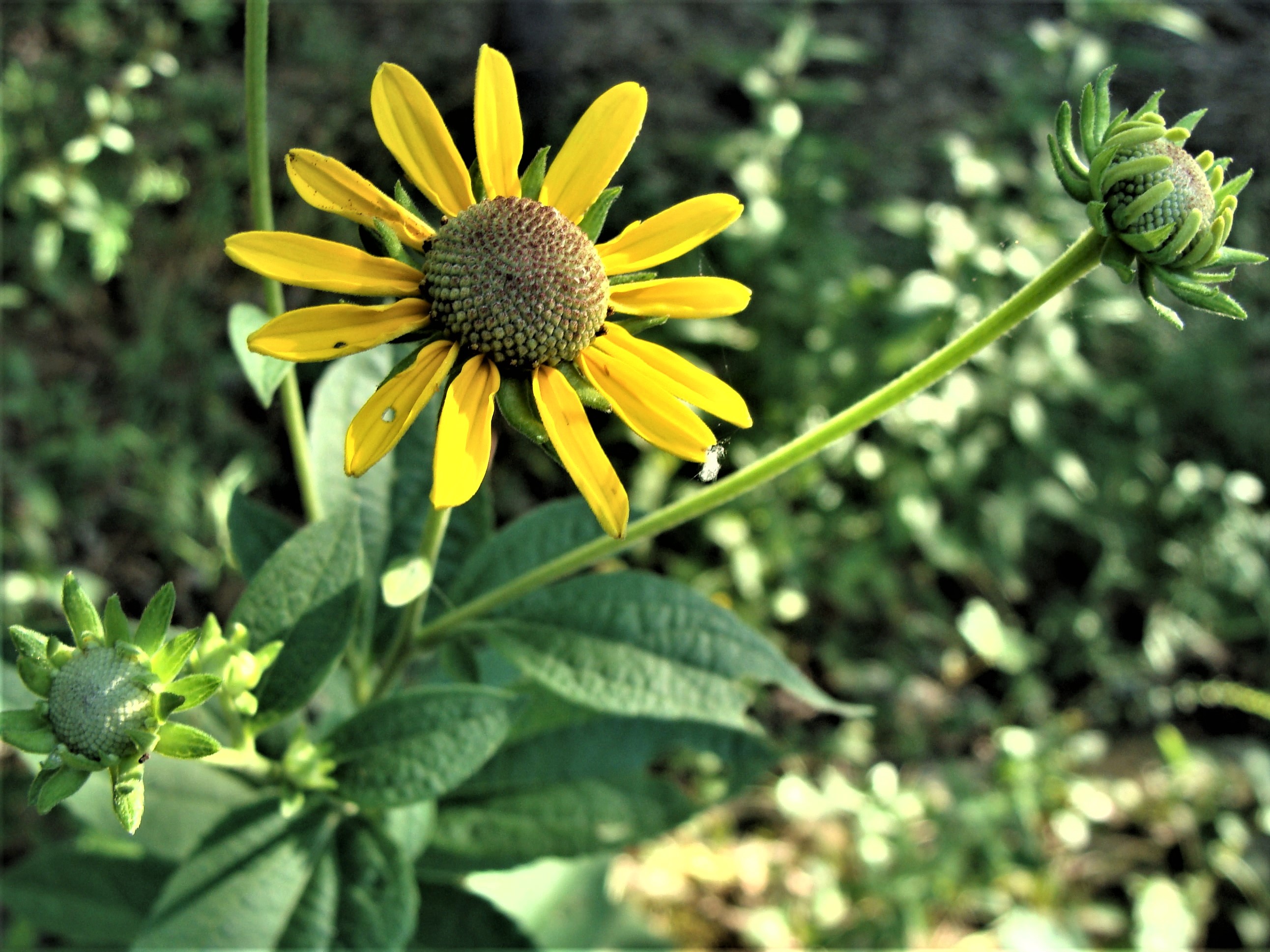

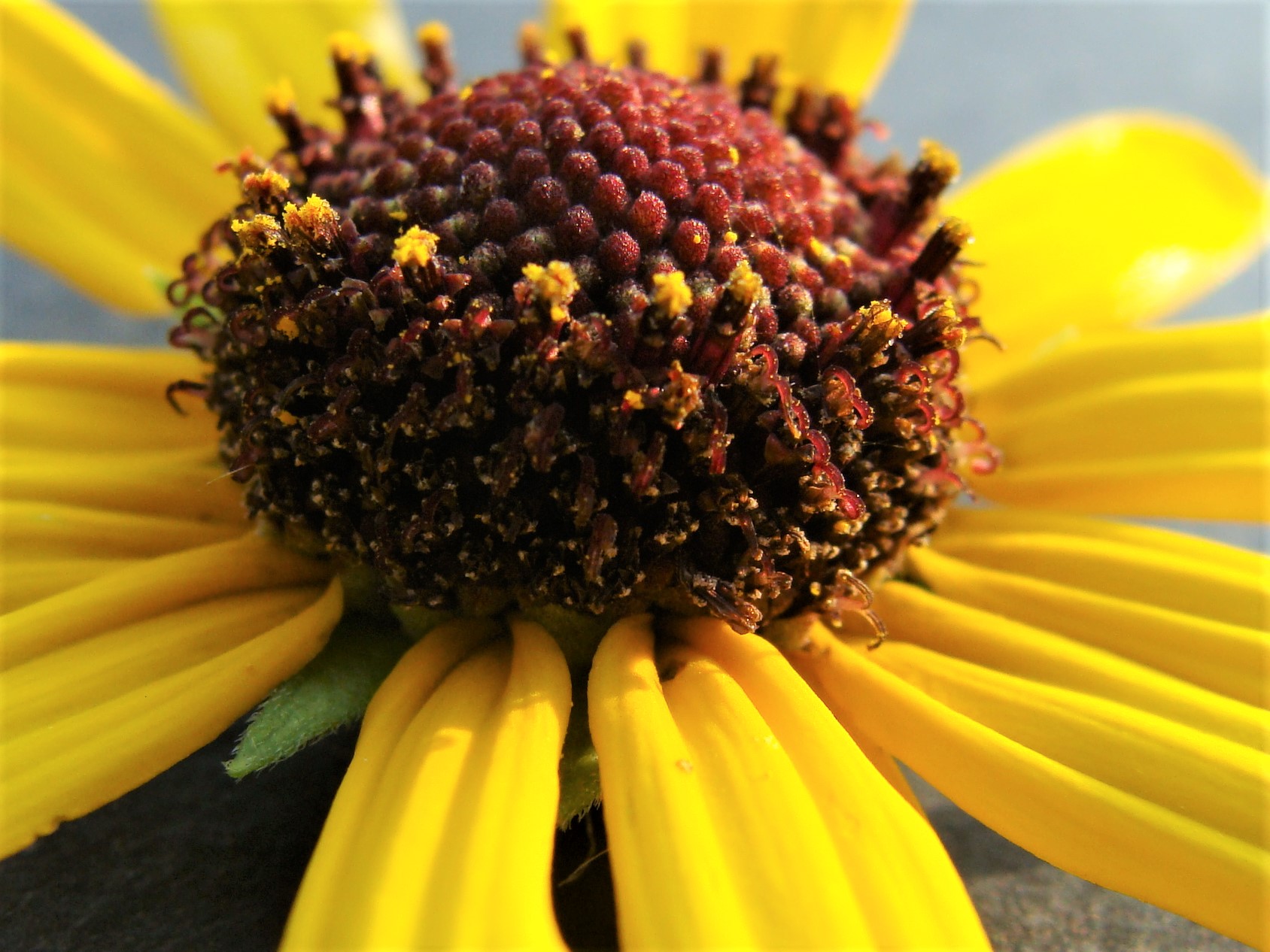
Flowerheads have a conic receptacle and a flat-bottomed involucre of closely spaced to overlapping lanceolate to broad-lanceolate bracts (phyllaries) in 2 to 3 series – those in upper series spreading while those of lower series down-turned. The firm bracts (to ⅜ inch long and ⅛ inch wide) are pale green with dense, appressed, minute pubescence on their exterior and margins with the pubescence extending onto the peduncles. When disk florets have passed anthesis, the central disk becomes dark brown before ray florets whither and head dries while remainder of plant remains viable.
Fertilized disk florets produce ⅛-long dark brown, 4-sided, narrow, conic achenes (aka cypselae in Aster family) with a truncate top rimmed with minute bristles (pappus). In the dense dry head, the bracts subtending disk florets becomes chaff that remains while the achenes drop from the head.
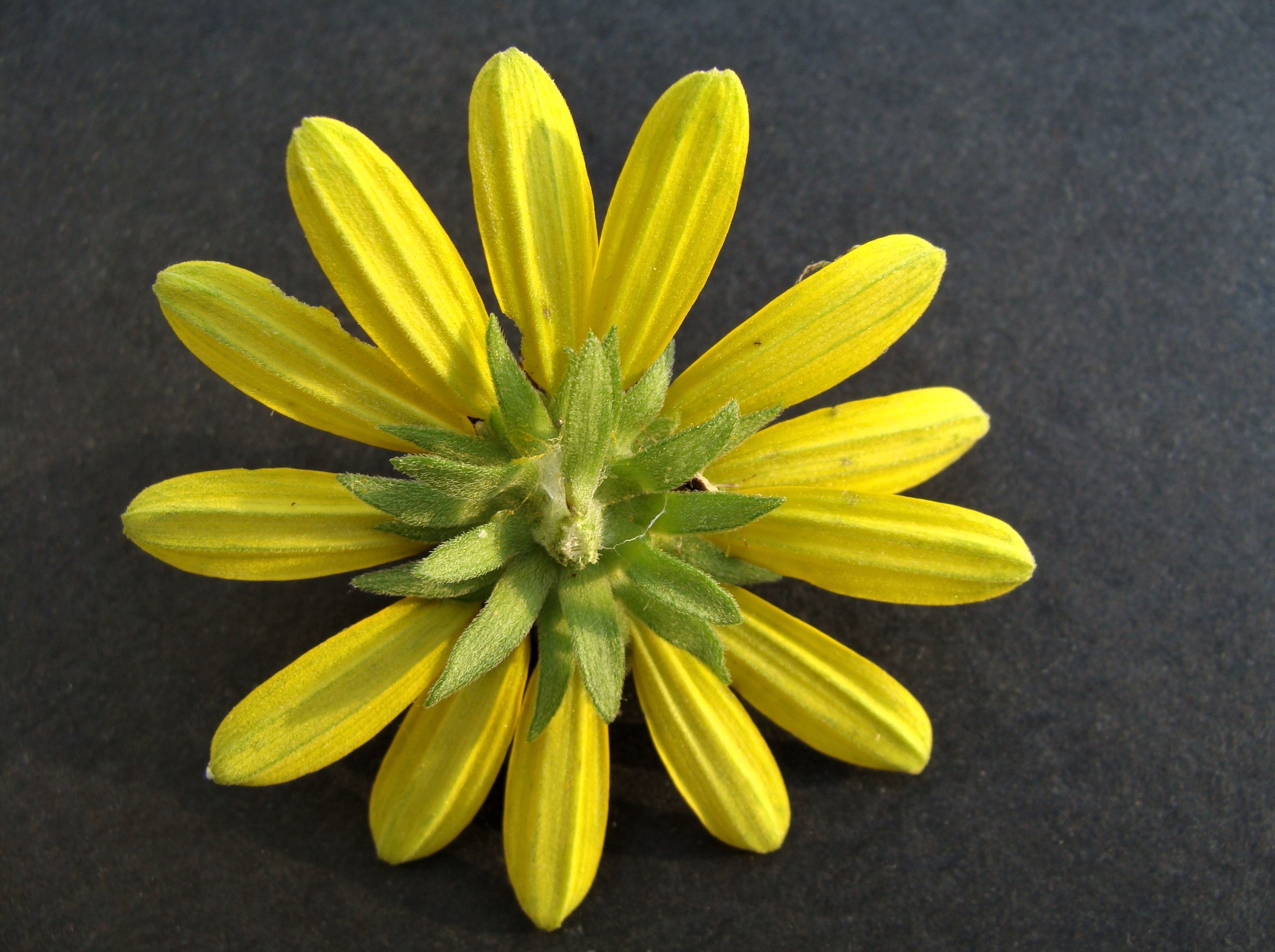
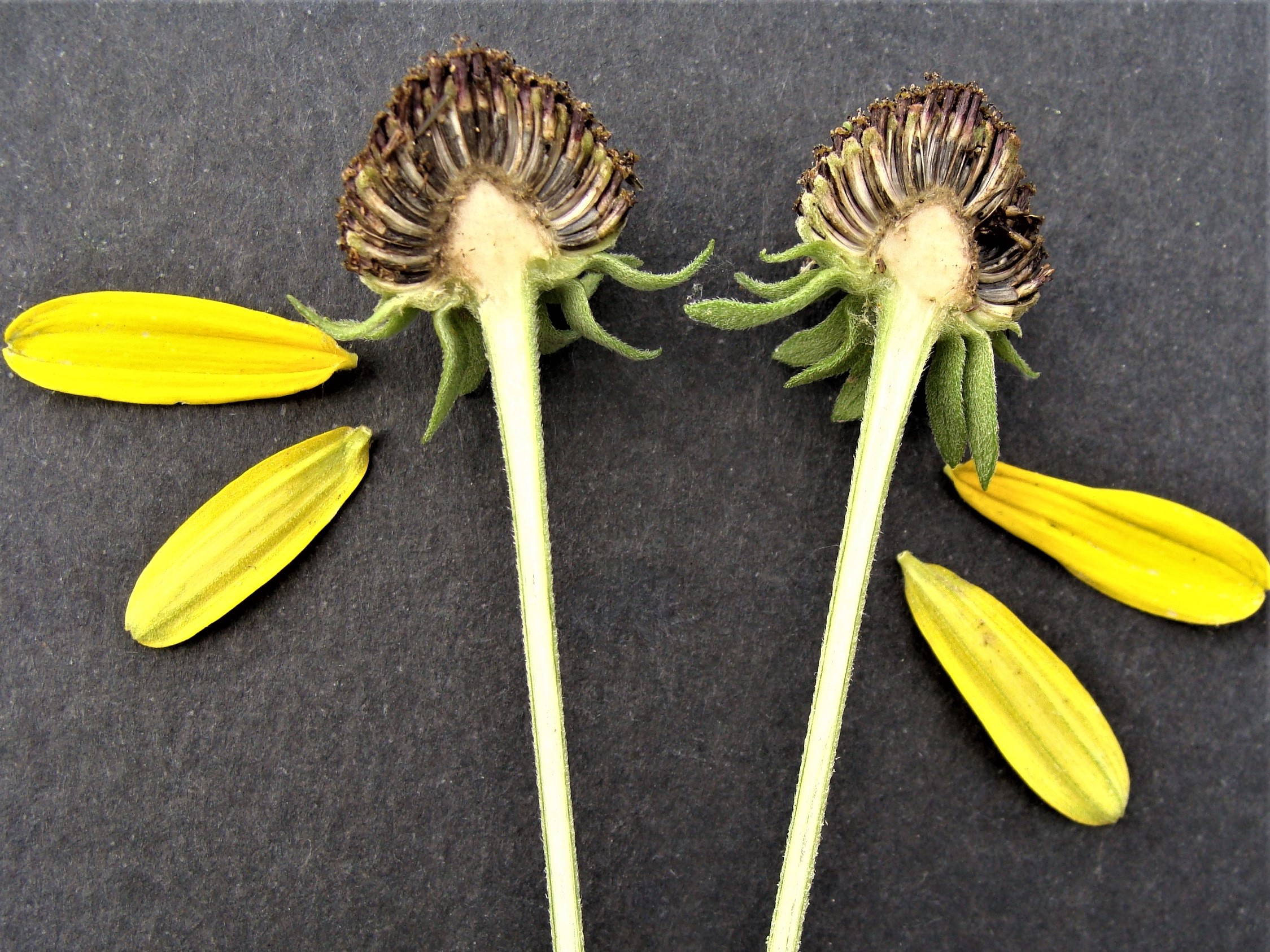
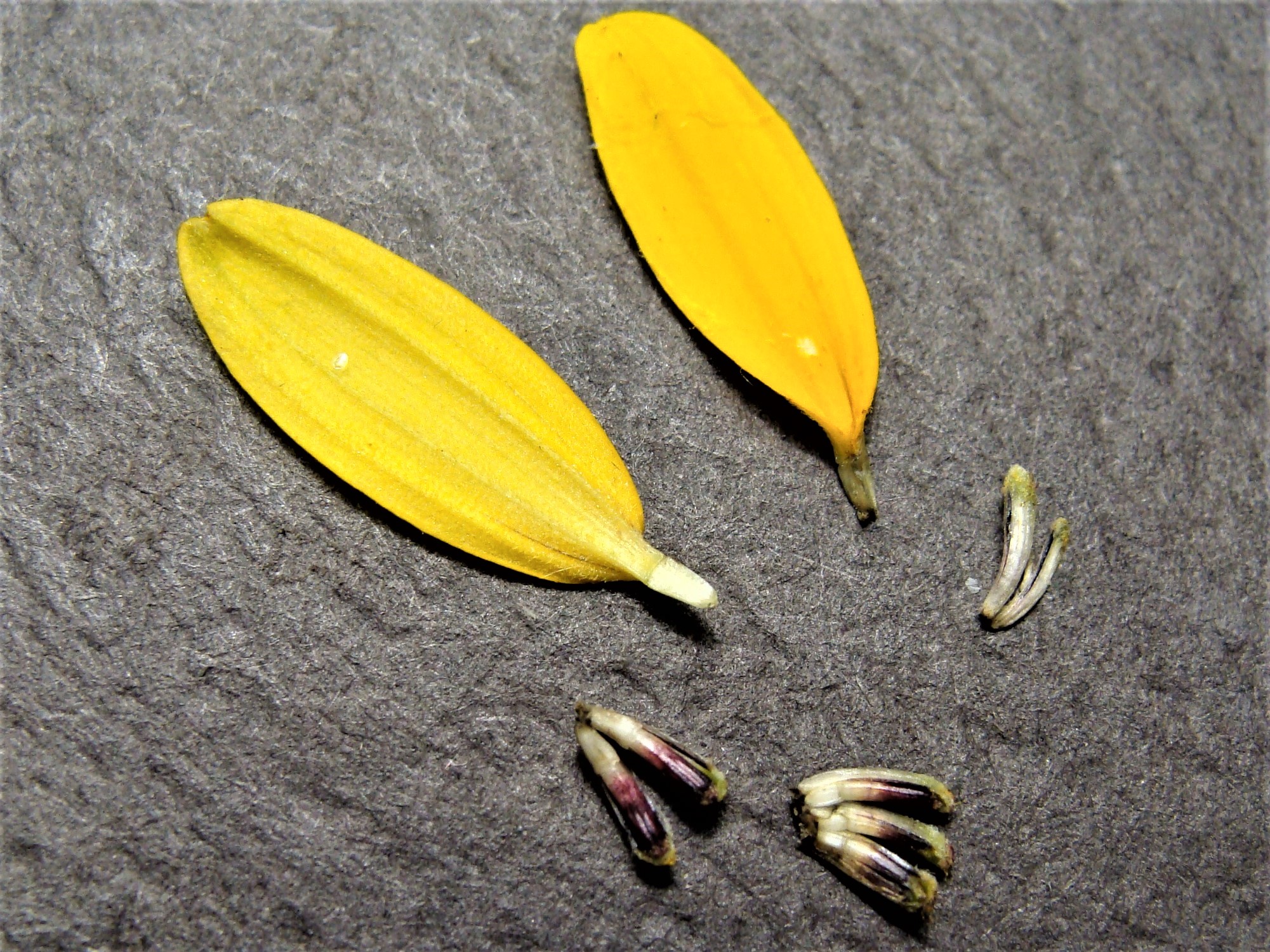
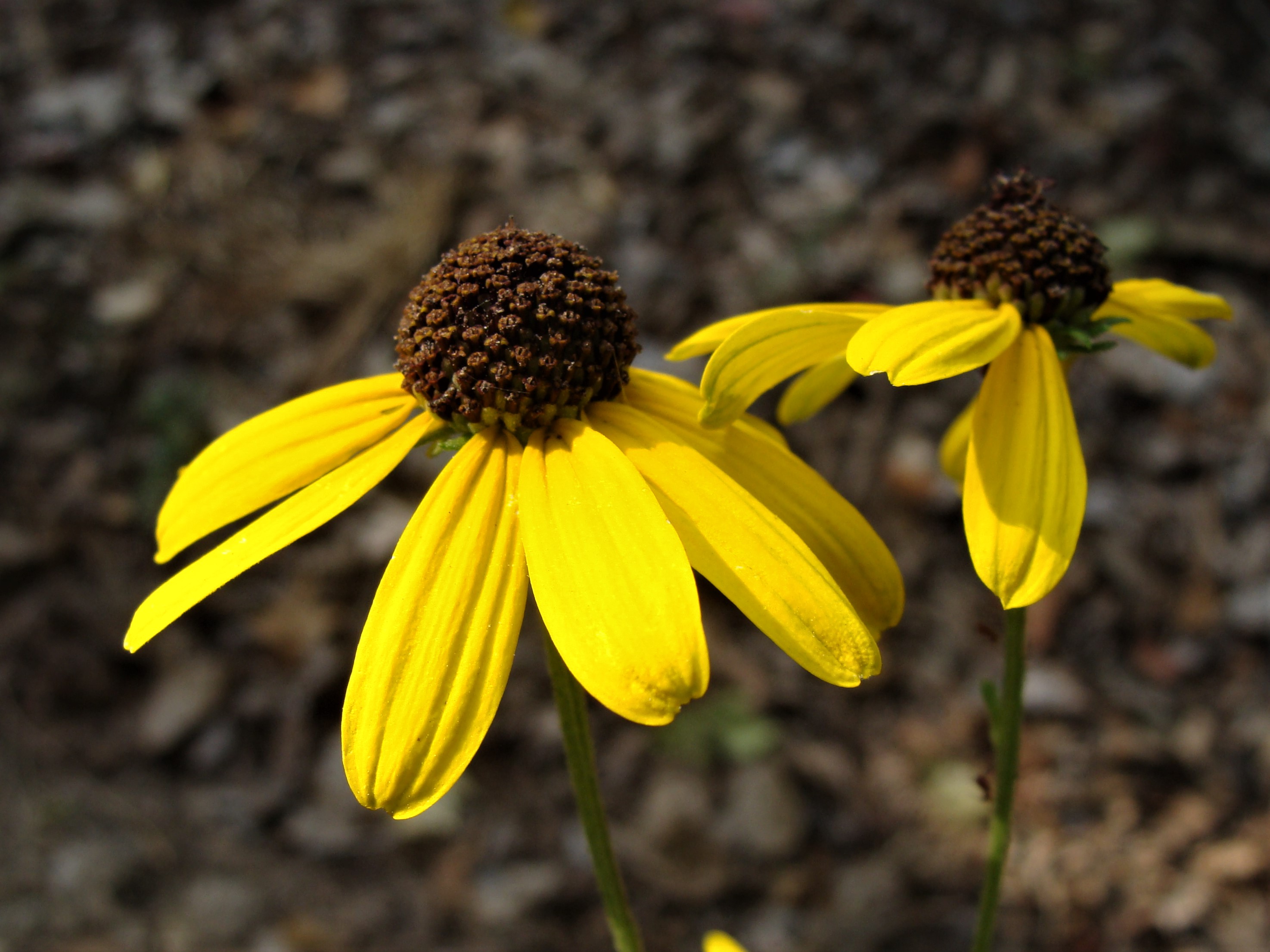
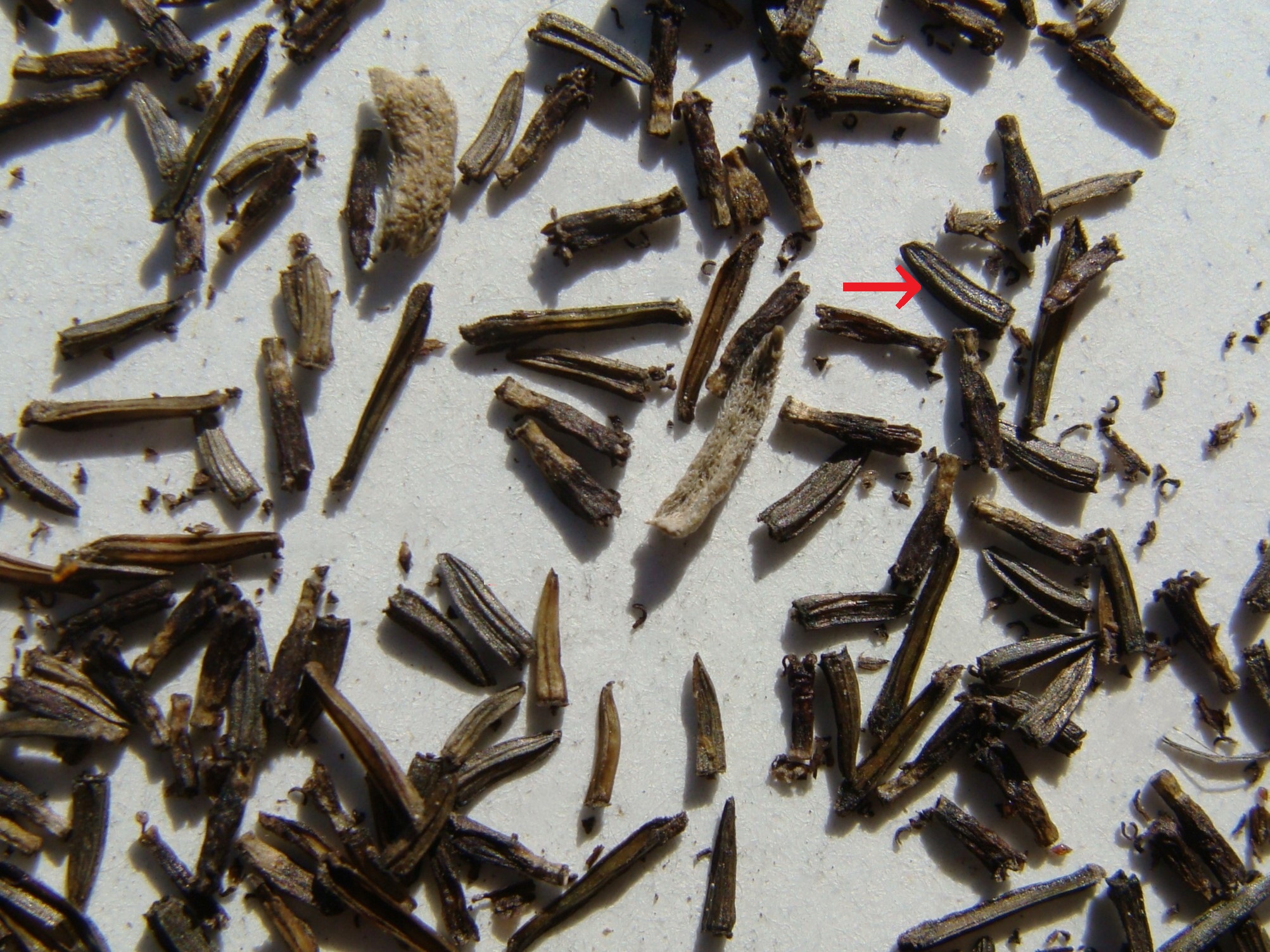
Sweet Coneflower is a good choice for most garden styles where the site is mostly sunny with well-drained soil. With its modest size, this perennial has interesting leaf shapes and showy composite flowerheads with bright yellow ligules. Flowerheads persist for a month or more in mid to late summer. The number of stems increases from year to year but plants are not aggressive invaders. Plants provide pollen and nectar to insects and seed for birds and small mammals.
In addition to Sweet Coneflower, 9 additional species of the genus occur in Arkansas – all with yellow composite flowerheads. Only 2 of the 9 species have lobed leaves; namely, Brown-Eyed Susan (Rudbeckia triloba var. triloba) and Cut Leaf Coneflower (Rudbeckia laciniata var laciniata). Sweet Coneflower can be identified by its perennial nature and larger flowerheads as compared to the annual much-branched Brown-Eyed Susan with small flowerheads, and by its compact clumping habit and pubescence as compared to the clonal perennial Cut Leaf Coneflower with glabrous stems and leaves and which favors significantly moister habitats.
*The genus name, established by Carl Linnaeus (who developed the binomial nomenclature in the 18th century) to commemorate his professor “Olof Rudbeck the Younger”. “Olof Rudbeck the Younger” is the son of Olaus Rudbeck (aka “Olof Rudbeck the Elder”), both prominent Swedish scientists and botanists. For a summation of their accomplishments see: Olaus Rudbeck – Wikipedia and Olof Rudbeck the Younger – Wikipedia.
Article and photographs by ANPS member Sid Vogelpohl

